
Published:
Readtime: 18 min
Every product is carefully selected by our editors and experts. If you buy from a link, we may earn a commission. Learn more. For more information on how we test products, click here.
Japanese whisky has become one of the most sought-after styles on earth, but with the continued rise in popularity, it’s becoming difficult to distinguish the good from the average. Thankfully, our team of experts and drinks writer Christopher Osburn have put together a list of their favourite bottles. Their list includes brands you’re probably familiar with e.g. Yamazaki, Hibiki, and Nikka. However, it also puts a focus on value-for-money Japanese whiskies that are easy to find online, at your local bottleshop, or bar. And while comparisons to Scotch are inevitable, that doesn’t mean the country’s finest expressions aren’t unique in their own right. Let’s take a closer look at the best Japanese whisky to drink right now.
Best Japanese Whisky at a Glance
Highlights from our list include the following:
- Best overall: Hibiki Harmony
- For value for money: Nikka ‘From The Barrel’
- For beginners: Yoichi Single Malt
- For cocktails: Toki Blended
- For the experienced drinker: Ichiro’s Malt Chichibu Malt & Grain 505 World Blend
- For smoky Japanese whisky: Hakushu 12 Year Old
Now that we’ve looked at our favourites, let’s check out the complete list.
RELATED: Can’t get enough whisky? Check out our comprehensive guide to whisky here.
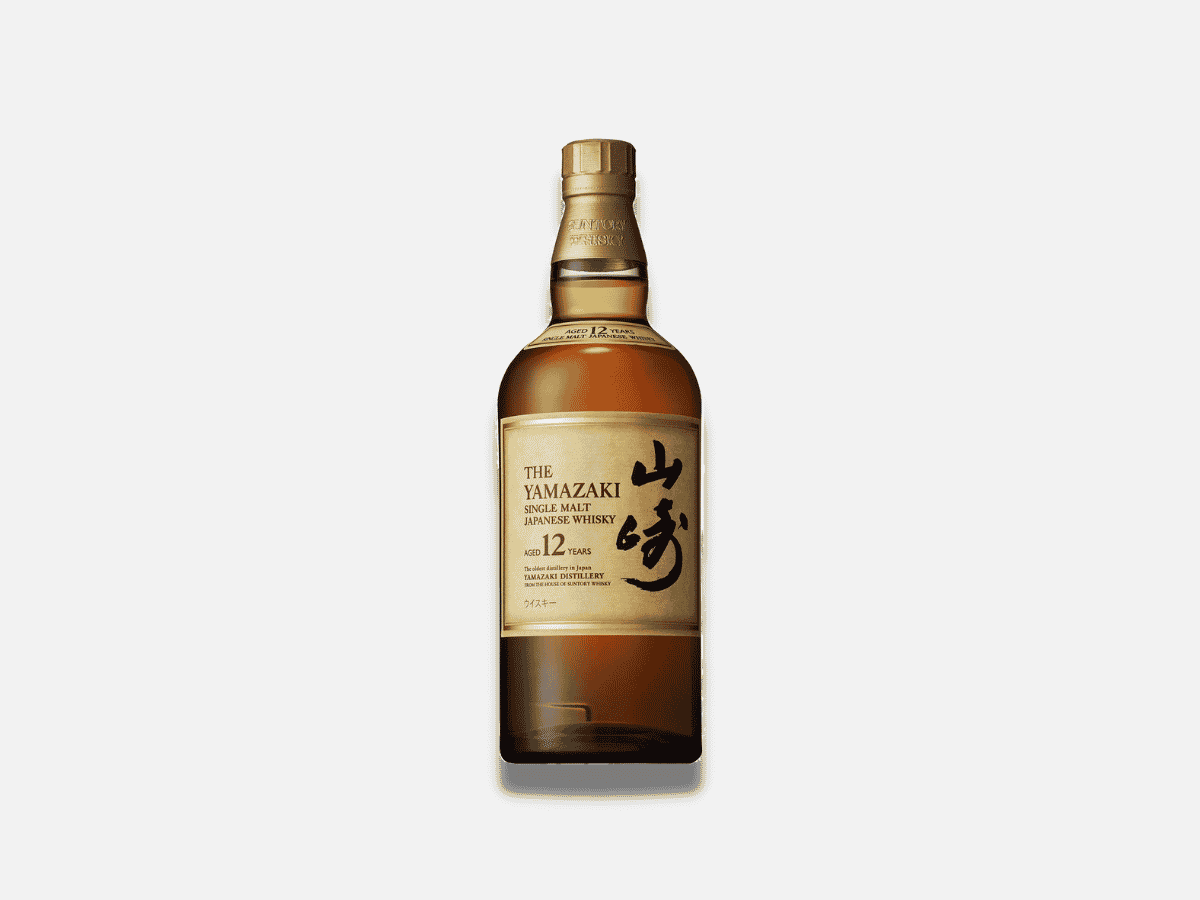
1. Yamazaki 12 Year Old
Price: from AU$349.95
| Pros | Cons |
| It remains the quintessential Japanese whisky and distinguishes itself from Scotch with inoffensive, delicate flavours. You’ll find everything from jam to spice, and even a little coconut. | With the recent price increase off the back of a supply shortage, it’s hard to justify when you can get three bottles of good Scotch for the same price and not feel guilty about drinking them. |
Yamazaki is the distillery that started it all and continues to make some of the best Japanese whisky that’ll ever cross your lips. We love the rich texture, palpable complexity, and unmistakable character from every sip of the brand’s top vintages, especially the 18 Year Old, but if you want to start somewhere relatively affordable you’ll want the Yamazaki 12 Year Old. We remember purchasing bottles when they were priced around AU$120, but with another shortage rearing its head, you won’t find a bottle for less than AU$350 today. It might be an award-winning drop with irresistible woody chocolate notes, but it’s become too expensive to recommend.
If money’s no object the Yamazaki 18-Year-Old Single Malt remains the cream of the crop. Where the 12 is made up of 80% white oak casks with 20% shared between sherry and Mizunara, the 18 is 80% sherry cask and offers deeper complexity, more character, and a richer palate of dark chocolate, stone fruits, and floral notes with a wisp of smoke. Priced around AU$1,700 it’s probably worth the price of admission. Although, it’s still no comparison to the $1 Million Yamazaki 55 Year Old we tried.
Owner: Suntory
Founded: 1923
Founder: Shinjiro Torii
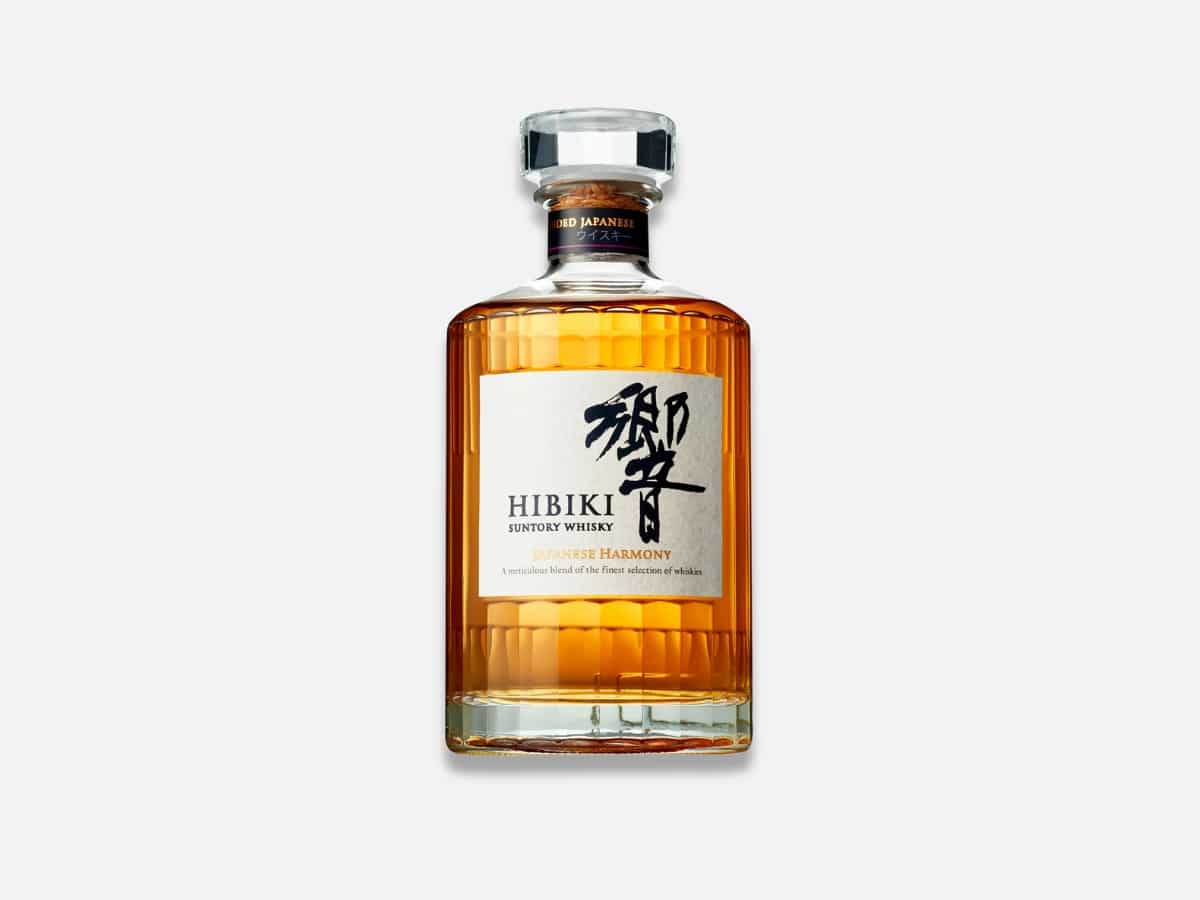
2. Hibiki Harmony
Price: from AU$189.00
| Pros | Cons |
| The best Japanese whisky for a first-timer, but remains something you can drink on special occasions. You’ll find aromatic notes on the nose before sugary flavours of honey, chocolate, and caramelised fruits before a hint of black pepper on the finish. | Even though it’s a blended whisky, it’s hard to fault considering the price. However, sometimes bottles can taste different because of the blending process where up to 100 different whiskies are used to find the perfect flavour. |
Hibiki is a more affordable, easier-to-find blended alternative to Yamazaki that sits under the same Suntory banner. Don’t think for a second that this takes anything away from the prestige or flavours because those who diligently swear by single malts are missing out on statements like the Hibiki 21 Year Old and 30 Year Old which are widely considered to be some of the most delicious whiskies on the planet, period.
For something that you can afford, we recommend you try the Hibiki Harmony. You’ll notice a floral nose beneath a smooth body of sherried sweetness and light smoke. It’s a great beginner Japanese whisky priced around AU$200 which makes it one of the more affordable and easier to find options on our list.
Owner: Suntory
Founded: 1989
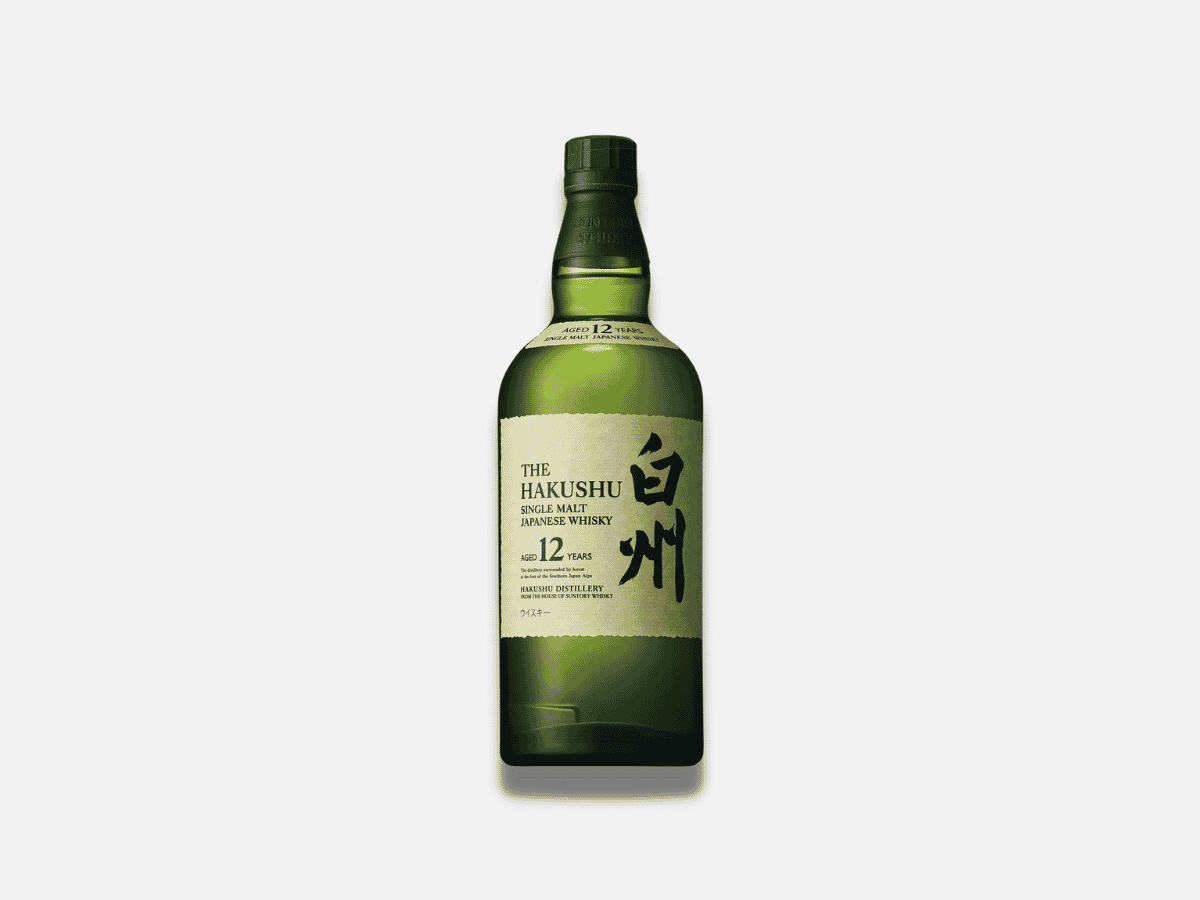
3. Hakushu 12 Year Old
Price: from AU$398.00
| Pros | Cons |
| Green and fresh whisky with crisp citrus flavours of green apple, pear, orange peel and blueberries. The finish is particularly nice with roasted nuts, grains, and dark chocolate. | It’s a little smokey compared to Yamazaki so if you’re not used to this flavour your palate may disagree. Again, the recent price increase makes this quite expensive for what is a good but not great whisky. |
The smoky alternative to Yamazaki that also falls under the Suntory brand is this great whisky from Hakushu. If you love your Islay whiskies, consider this your brand of choice with each expression being distilled from 100 per cent malted barley before it’s dried over a peat fire. At the top of the food chain is the Hakushu 25, but our top tip is the humble 12 Year Old with unique sweet lime and green fruit palate, we find the finish even has a little bamboo or cane juice which is different and fun.
If you’re looking for something rare and special as an alternative, do your best to track down the Hakushu Heavily Peated. It’s a sought-after dram with delicious saltiness on the palate that combines with meaty apples, pears, and old-school vanilla. It’s closer to a Benriach in terms of the smoke levels, maybe a young Caol Ila. Yum.
Owner: Suntory
Founded: 1973
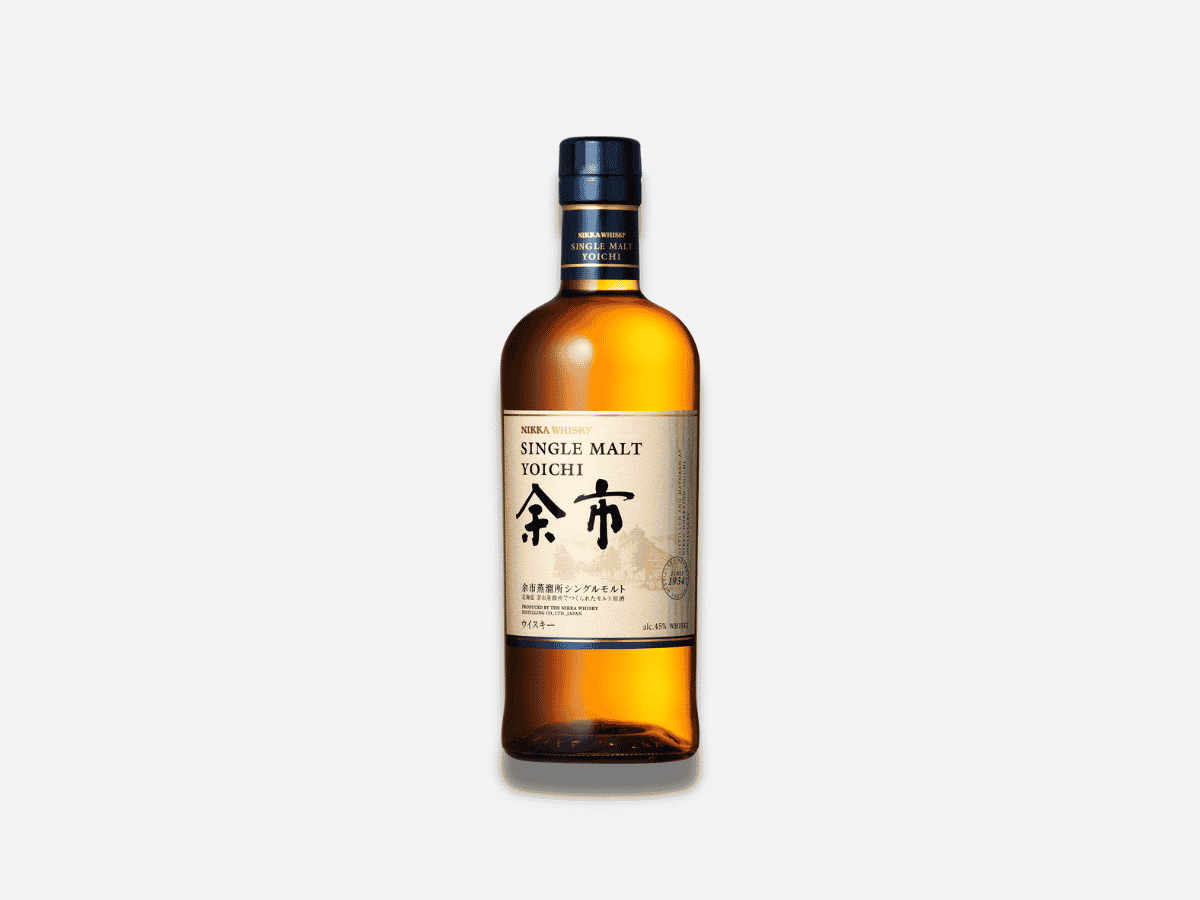
4. Yoichi Single Malt
Price: from AU$149.00
| Pros | Cons |
| The best value for money single malt coming out of Japan. You’ll find light peat balanced by flavours of honey, grapes, and pineapple. The finish doesn’t develop beyond these flavours, but it’s pleasant nonetheless. | If you dislike peat and smoke this isn’t one for you. Not that it’s overpowering like a Laphroaig, but it’s present on the palate and can dominate some of the sweeter flavours. |
The founding father of this industry, Masataka Taketsuru formed Nikka Distilling and built a facility called Yoichi in 1934 after which this single malt is named. With a considerable headstart on most of the competition, this brand has been able to craft a wide range of delectable classics, experimenting with all sorts of ingredients and techniques in the process and creating the best value-for-money single malt Japanese whisky on the market. That said, statements like the 15-Year Peated Single Malt or the 20-Year Single Malt remain our favourites if money is no object.
If you want to get your hands on a great bottle for a fair price, the no-age-statement Nikka Yoichi Single Malt can be found for under AU$150 and offers a palate of brown sugar and licorice followed by a lightly peated finish.
Owner: Nikka
Founded: 1934
Founder: Masataka Taketsuru
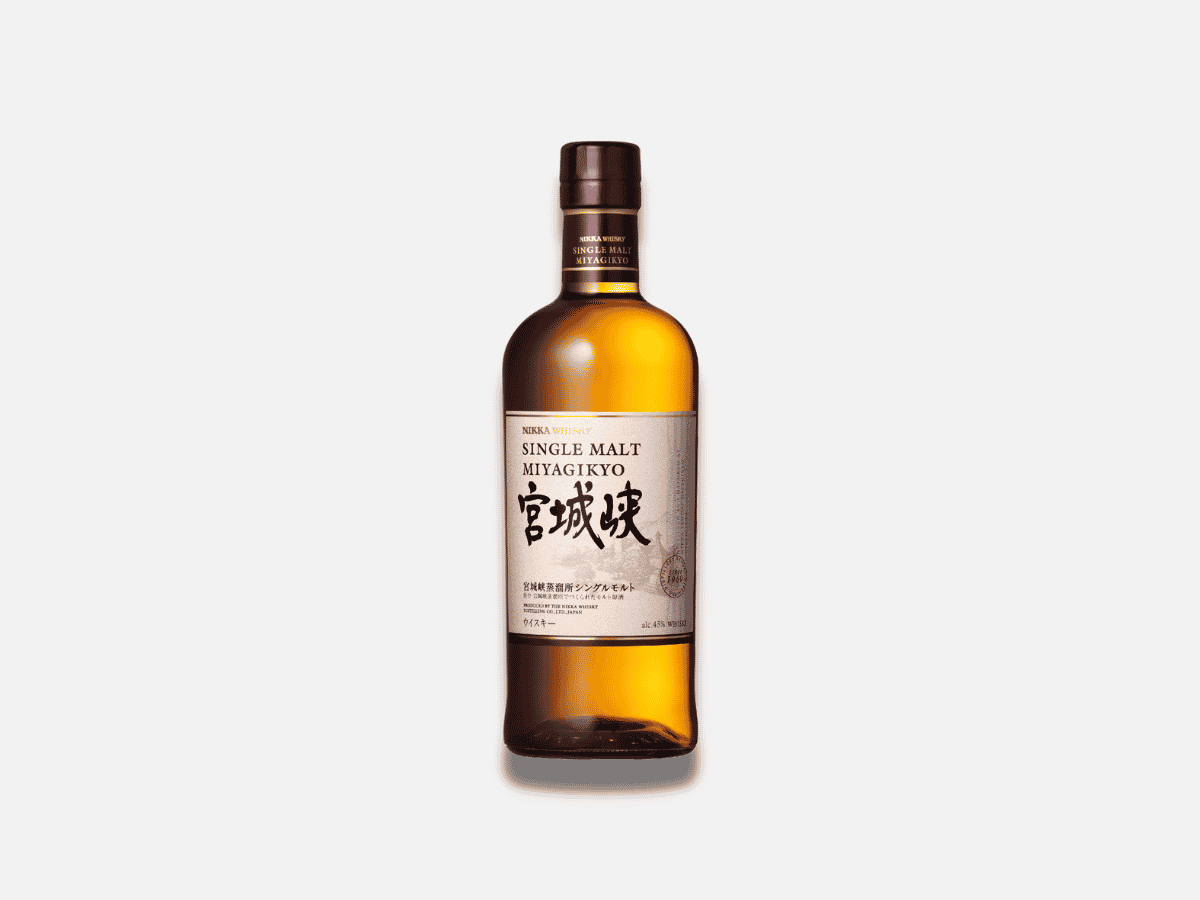
5. Miyagikyo Single Malt
Price: from AU$140.00
| Pros | Cons |
| Sweet and fruity whisky that’s easy drinking for all palates. You’ll find classic notes of pear and honey, but also some fun peppers and spices on the finish. It’s branded as a peated and smoky dram but it’s not overpowering and safe for beginners. | Similar to Yoichi Single Malt the lack of age means the whisky doesn’t develop much on the palate and lacks a level of sophistication that you’ll find in Hibiki Harmony and Hakushu. |
Formerly known as Sendai, Nikka’s Miyagikyo Distillery distinguishes itself by way of several unique expressions such as the 2017 Rum Wood Finish Single Malt and the cask strength Sherry & Sweet. This is a very rare and sought-after brand of Japanese whisky, so if you’d rather not dig through the archives of your local specialty bottle shop, we think you’ll be happy with the much cheaper no-age-statement Miyagikyo Single Malt as pictured. This bottle was released in 2016 to fill the void left by the age-statement bottles from Miyagikyo after they were discontinued. Nonetheless, the palate offers a non-traditional mix of orange peel and chocolate before it develops gram cracker and honey with a spice aftertaste accustomed to many no-age Japanese whiskies.
Owner: Nikka
Founded: 1969
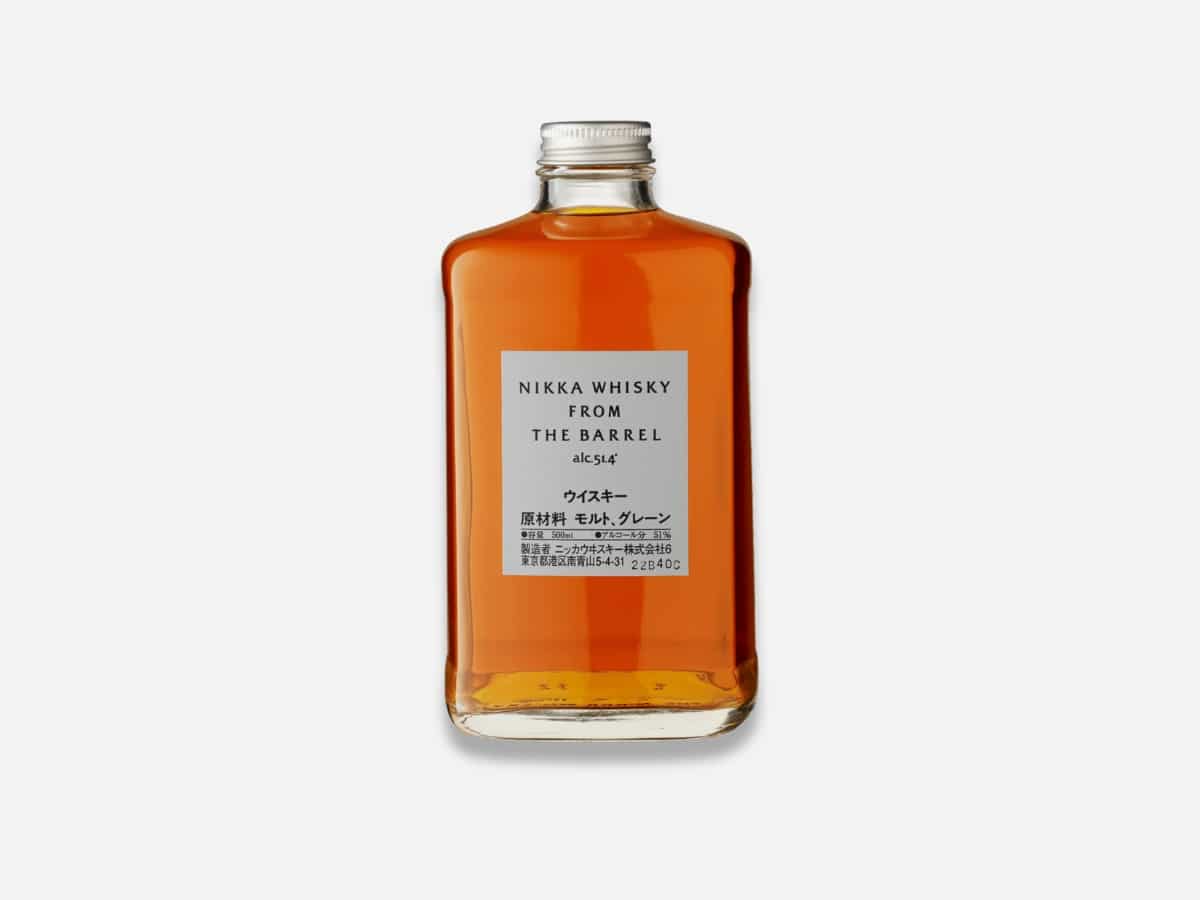
6. Nikka From The Barrel
Price: from AU$89.95
| Pros | Cons |
| One of the best Japanese whiskies for developing palates you’ll love this bottle if you’re a sherry cask fan. The classic flavours of vanilla and dried fruit are front and centre on the palate and it’s like eating a nice bowl of fruity oats. | It’s a higher-strength blend at 51.4% ABV so it can be a little spicy for the less developed palate and those early whisky drinkers. |
You can’t talk about the best Japanese whisky without Nikka. The brand’s ‘From the Barrel’ release as pictured ranks among the most affordable and easiest to find, although harder-to-find bottles like Nikka Tailored are a cut above. In any case, ‘From The Barrel’ culls from over 100 different batches of malt and grain, all of which are produced at the Yoichi and Miyagikyo distilleries. It’s a great Hibiki Harmony alternative and packs a full-body palate with sherry, cinnamon, orange zest, and a touch of smoke. While this is one of the cheapest options on our list (keep in mind that it’s just 500ml), it’s highly rated by the team.
Owner: Nikka
Founded: 2 July 1934
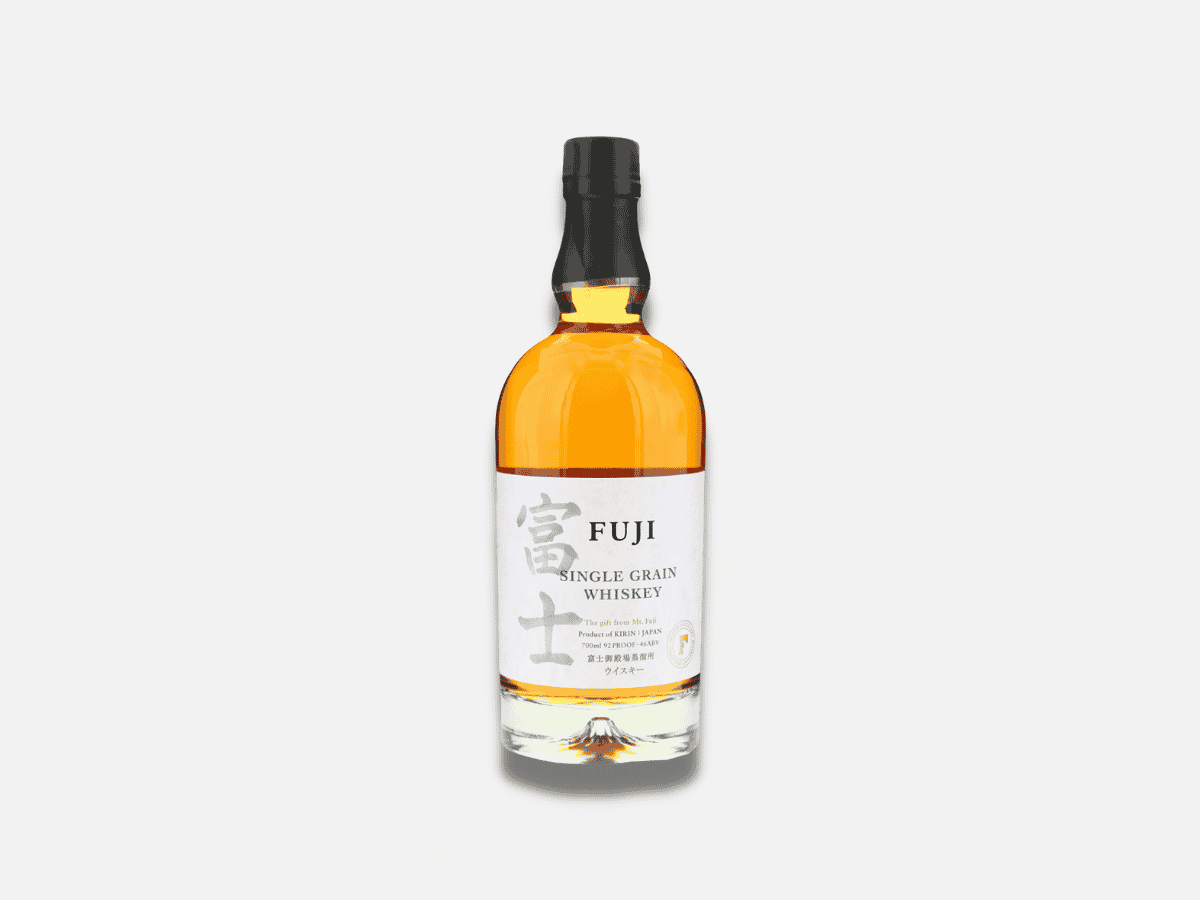
7. Fuji Single Grain
Price: from AU$130.00
| Pros | Cons |
| This is a great grain whisky and one of the best whiskies we’ve tried around AU$100 from anywhere in the world. You’ll love the flavours of spice and cinnamon which is unlike many other options on our list. | Compared to Suntory Chita it’s slightly more expensive and offers a very similar flavour profile with plenty of wheat and even a hint of chocolate. |
If you’re a lover of Japanese beer you’ll recognise Fuji’s parent company Kirin but you probably didn’t know the company also runs a distillery at the South East end of Mt. Fuji. It goes by the name ‘Fuji’ and produces small-batch blends such as this delicious ‘Single Grain’ bottle we’ve selected here. Another great option if you’re a beginner, the nose is very inviting with something of a plum wine or brandy scent, from there the palate develops with chocolate and chewy bread before the dominant flavours of apple and pear come through. The finish is medium in length with initial sweetness before it’s backed in by floral incense and that familiar day-old bread. Considering the price of around AU$130 it’s a great gift for yourself of a whisky-loving friend.
Founded: Distillery built in 1972
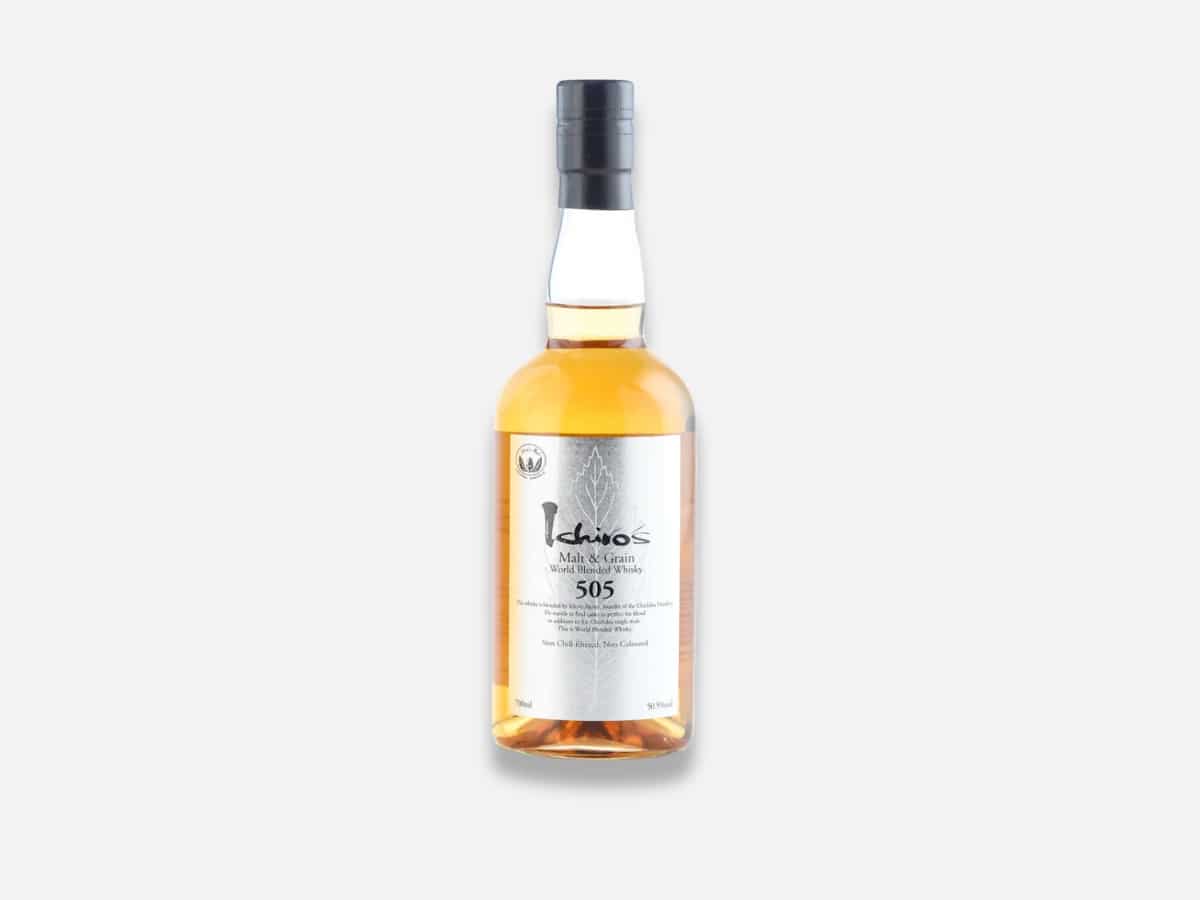
8. Ichiro’s Malt Chichibu Malt & Grain 505 World Blend
Price: from AU$429.00
| Pros | Cons |
| This is another great option if you’re into your American bourbons. You’ll find all the hallmark flavours of banana, caramel, and malt, but with a little nuttiness thrown in for good measure. It’s also a spicy one at 50.5% ABV. | It’s become a rare bottle which means the price has gone up and the quality has remained the same. Sadly at this point, it’s probably not worth the asking price, but if the price falls back around AU$200 it would be money well spent. |
If you like the sound of the Fuji Single Grain but you want something more luxurious, this is a great alternative. Ichiro’s Malt Chichibu Malt & Grain 505 World Blend is priced around AU$450 which makes it one of the most expensive options on our list but it’s a very unique Japanese whisky with dominant popcorn notes on the palate and a creamy almond finish. It’s also a rare dram with a scarce list of specialty retailers carrying this one in Australia.
Owner: Ichiro Akuto

9. Akashi White Oak
Price: from AU$80.00
| Pros | Cons |
| As simple as Japanese whisky gets, if you love bourbon-style notes of caramel, banana, and honey this is a great option. Sharply priced and a more sophisticated drink than Suntory Toki that’s better suited for drinking neat. | Not as versatile as Suntory Toki for use in cocktails with a distinct lack of citrus. This is instead been replaced by cereal flavours and spices like nutmeg. |
Japan’s Akashi distillery was founded in 1888 and history says this was indeed the first in Japan to obtain a liquor license and distil spirits in 1919. Jump ahead a few decades and you’ll see this brand name on single malts and blends alike. For an everyday dram, we recommend the classic Akashi White Oak as pictured, with a palate full of orchard fruit and a hint of sherry.
If you’re looking for some a little rarer, the Akashi White Oak 5 Sherry Cask Single Malt is one of our favourites as it goes layers deep and balances sweet notes of brown sugar and cherry with brine and spice.
Founded: 1888
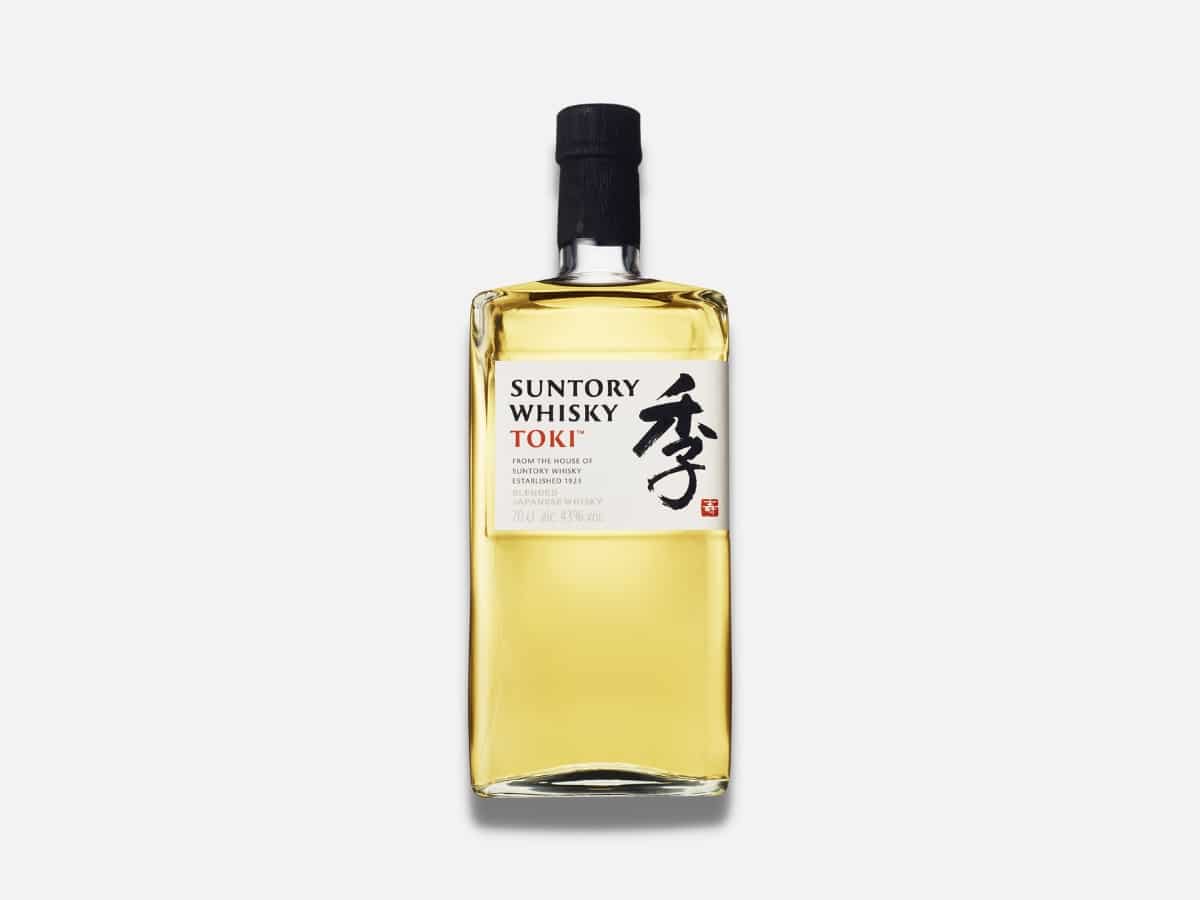
10. Toki Blended
Price: from AU$69.95
| Pros | Cons |
| It might be one of the cheapest Japanese whiskies on the market but it’s a great option for bourbon lovers with an initial bite before a long-lasting finish of bright citrus. This makes it a great option for high-ball cocktails. | The lighter notes of honey and citrus are not for the mature palate which prefers sherry casks and rich flavours. Finish is a little crisp and artificial for some. |
Sometimes the saying ‘keep it simple’ can land perfectly in the world of Japanese whisky and maybe the best case is Toki Blended. The most affordable of all bottles from the Suntory house, this is our pick if you’re looking to make a great Japanese cocktail – we recommend trying it in our Whisky highball recipe. In terms of flavour notes, we found orchard fruits and honey alongside classic green apples and citrus.
Founded: 1923
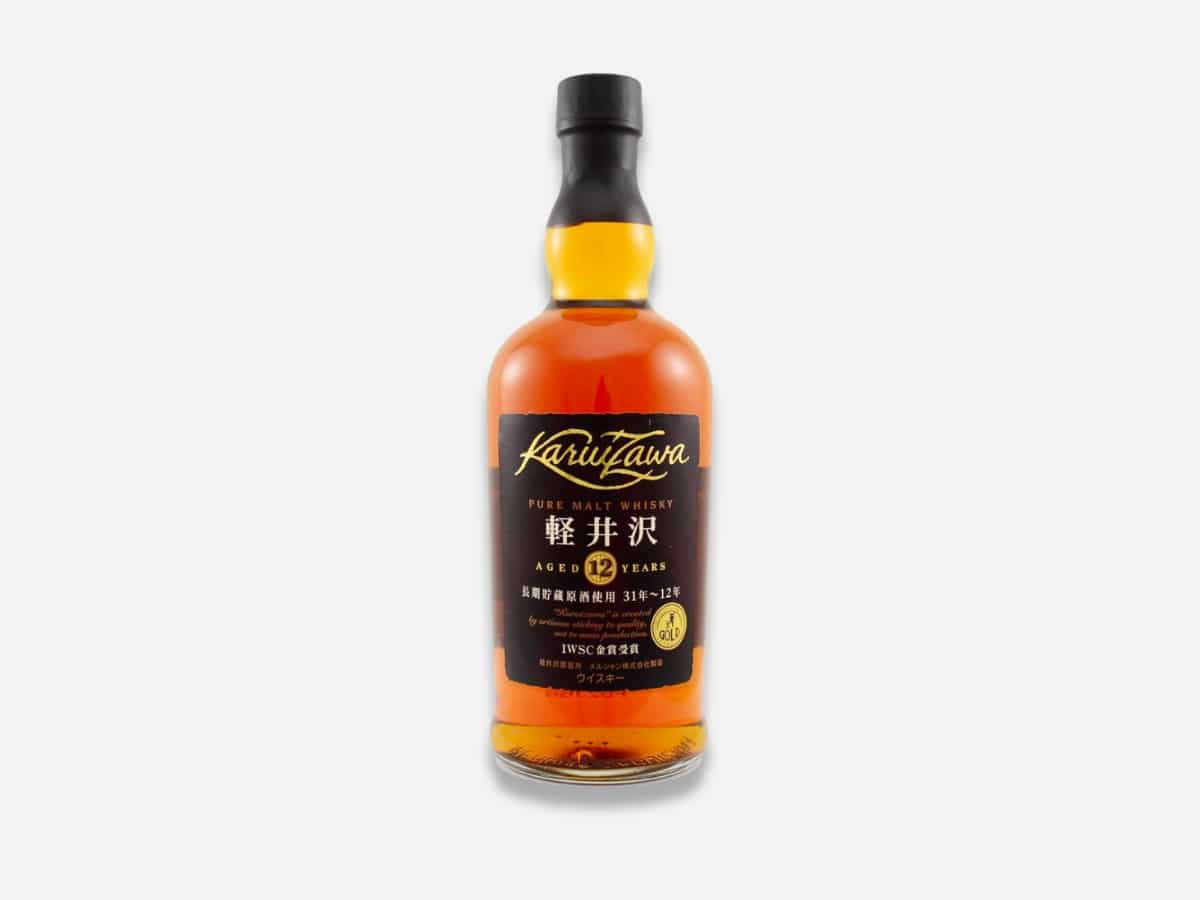
11. Karuizawa 12 Year Old Pure Malt
Price: from AU$2,200
| Pros | Cons |
| Widely considered to be the best and most sought-after Japanese whisky ever made. Unique because of its incense and umami flavours seen in no other bottle. | Unfortunately, because it’s no longer in production prices have sky-rocketed into the tens of thousands of dollars. You’re looking at $2000-6000 for a 12 Year Old which is nothing short of insane. |
One look at the ornate bottle designs is all it takes to fall in love with Karuizawa Distillery, which launched in 1955 and officially closed in 2001. When a recent collection of rare bottles fetched record-breaking prices at auction, the elusive brand jumped to the top of numerous bucket lists. Whether or not these rare vintages are worth the high price of admission is something fewer and fewer drinkers will know as the years come to pass, including ourselves. Nonetheless, we’ve included the cheapest in-stock bottle we could find online above: Karuizawa 12 Year Old Pure Malt. While we haven’t had the chance to try this one due to its rarity, it has an overall rating of 82.80/100 on whiskybase.com and offers a palate of bitter-sweet chocolate and vanilla with an oaky finish pushing through at the end.
Closed: Closed since 2001
Price range: from $22,000 AUD
Our favourite bottle: Anything, considering the price we’d love even a drop.
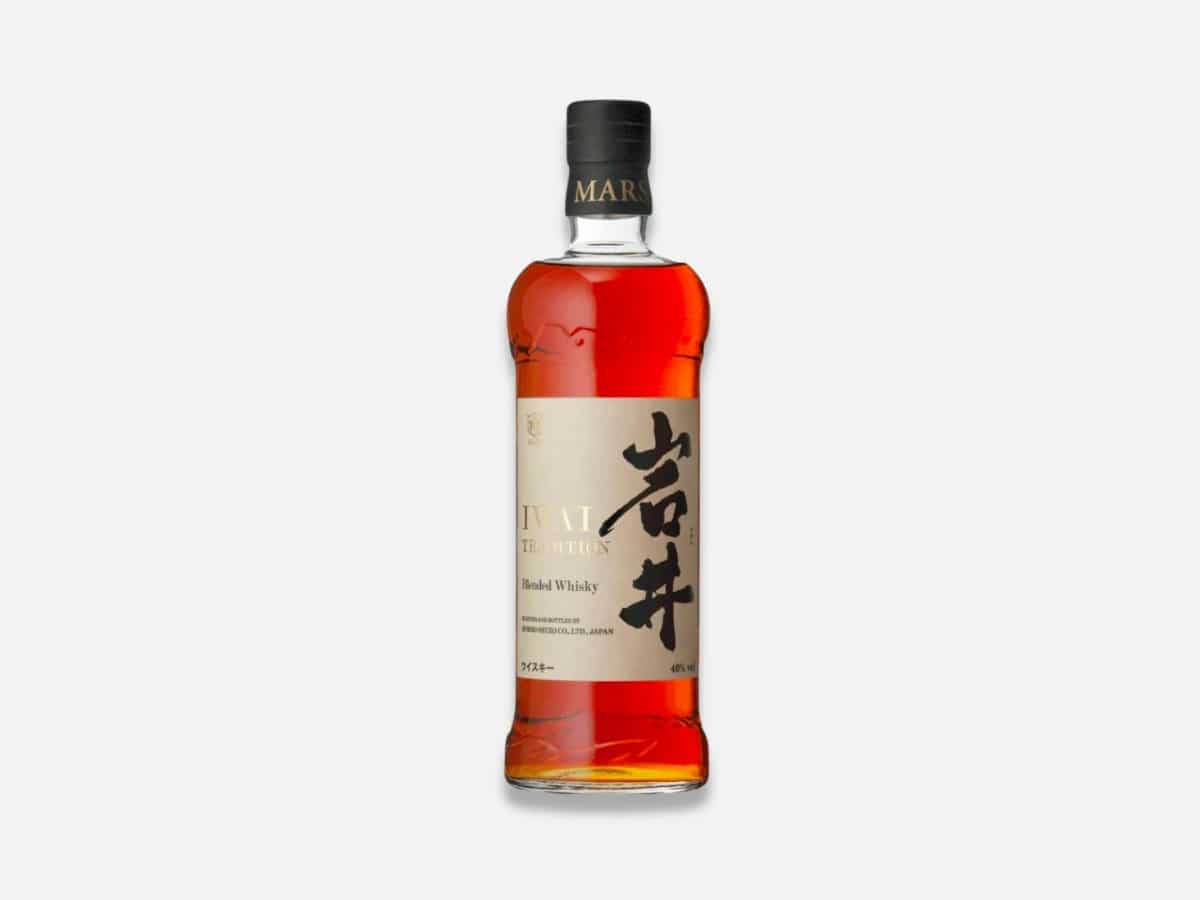
12. Mars Iwai Traditional
Price: from AU$99.99
| Pros | Cons |
| If you’re a fan of Islay whiskies then this is an interesting Japanese alternative. It’s well priced when you compare it to other peated bottles like Hakushu and on paper it offers similar notes of sweet peat and creamed corn. | While not present in every bottle we’ve tried, there can be a distinct watery, artificial bitterness that makes its way onto the palate and finish. Wouldn’t be our first choice, but it you’ve tried everything else it’s worth a flyer. |
Located 2600 feet above sea level in the Japanese Alps is the country’s highest distillery, also known as Mars Shinshu. Along with the high altitude comes moderate humidity and an ample supply of pristine water, which influence the brand’s single malts and popular blends. For a good sense of what this label can do, order a dram of the pictured Iwai Tradition. Comprised of both single malts and single-grain whiskies, we love the notes of brine, almond, peppercorn, malt, and peat smoke. The best part? It’s one of the most affordable Japanese whiskies on our list.
Owner: Hombo Shuzo Co., Ltd.
Founded: 1985
Why You Should Trust Our List
While we’ve tasted every whisky on this list (often thanks to our friends in the industry), we’ve also turned to the wider public for their overall ratings. Our list takes into account three major perspectives to determine the overall rating. In addition to our own opinions, we take into account reviews via alcohol retailer The Whisky List and the Australian drinks retailer Dan Murphy’s. We then collate the information together and measure the drink via overall flavour profile, reader ratings and commercial availability.
Brief History of Japanese Whisky
Japan began crafting its whisky as early as 1870, but commercial production didn’t kick off until the early 1920s. That was when a liquor importer named Shinjiro Torii opened the country’s first distillery in Yamazaki, a suburb of Kyoto known for its excellent water supply. Serving as Torii’s top executive was a former student named Masataka Taketsuru, who’d spent three years in Scotland learning how to distil a great dram.
In 1934, Taketsuru went off to open his own enterprise, Yoichi Distillery, in Hokkaido. While the distillery’s name would remain intact, Taketsuru’s company would eventually become Nikka. Torii’s company, meanwhile, would later become Suntory. As any Japanese whisky lover can attest, both companies continue to loom large.
As the decades progressed, Japanese whisky underwent numerous ebbs and flows. In the 1970s and early 1980s, an explosion in worldwide demand vicariously spawned a modest number of new distilleries and labels. That was followed by a drop in global popularity and then a recent resurgence. Today, there are approximately nine active distilleries in Japan.
Production Methods – Why it Tastes So Good
When it comes to any exotic trend, there’s a tendency to over-hype quality based on things like scarcity or exclusivity. Japanese whisky is certainly no exception. What we’re saying is that the spirit is not intrinsically superior to any other form of dram, no matter what the nearest “expert” might tell you. Why does it taste so good? The answer, of course, boils down to production methods, which continue to take various cues from Scotland. For example, Japanese whisky is most often made from imported malted barley, some of which is peated. As with Scotch, it’s also traditionally distilled twice using pot stills, and aged in either ex-bourbon or ex-sherry casks (while some are aged in Japanese oak).
That said, the Japanese and Scotch definitely strike their own unique accords. One variable is Japan’s climate, which experiences greater swings in temperature and thereby matures the whisky at a faster rate. Japanese distilleries also employ various innovations during production, such as using different types of yeast during fermentation or experimenting with the shapes of pot stills. This, in turn, leads to a broader range of distinctive flavours and profiles.
Japanese Whisky Shortage – Why it’s So Expensive
In 2020, Suntory discontinued two of its most cherished expressions: Hakushu 12 Year and Hibiki 17 Year. According to Forbes, it was among the first warning signs that Japan was in the midst of a whisky shortage. Being that most of the best Japanese whiskies take years to mature, it’s safe to say the shortage will continue for an indefinite period of time. Apparently, you can have too much of a good thing.
It all makes for a textbook case in basic economics. From the mid-1980s to about 2011, Japanese whisky fell into obscurity on the world stage, prompting brands to reduce their supply and at least one distillery to shutter. That was followed by a meteoric rise in global demand. As a result of these two coinciding factors, Japanese distillers now have a limited supply of their best expressions. This is also why the best Japanese whisky is so expensive and will likely remain so.
Join Our Exclusive Community!
WINNER– Media Brand of the Year, 2025
WINNER– Website of the Year, 2024
Alternatives to Japanese Whisky
Interested in more whisky stories? Here are a few stories to get you started:






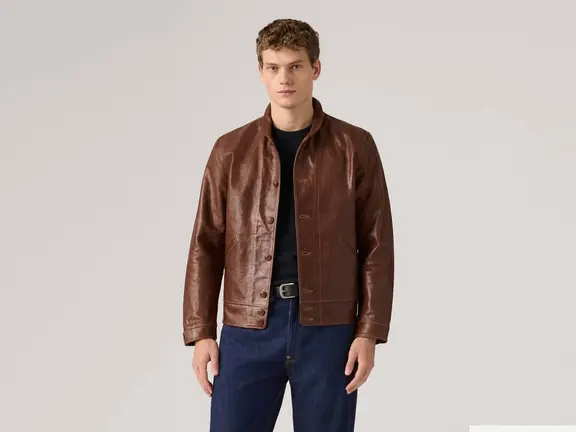
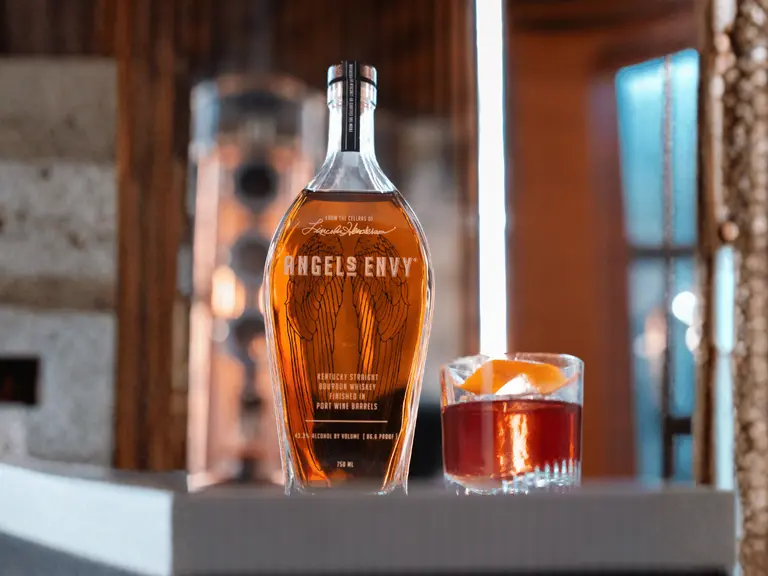












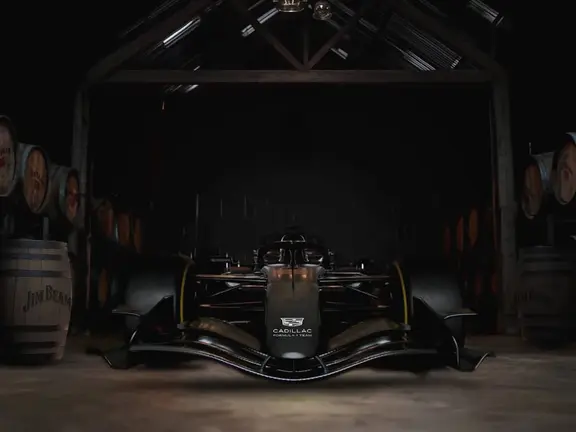



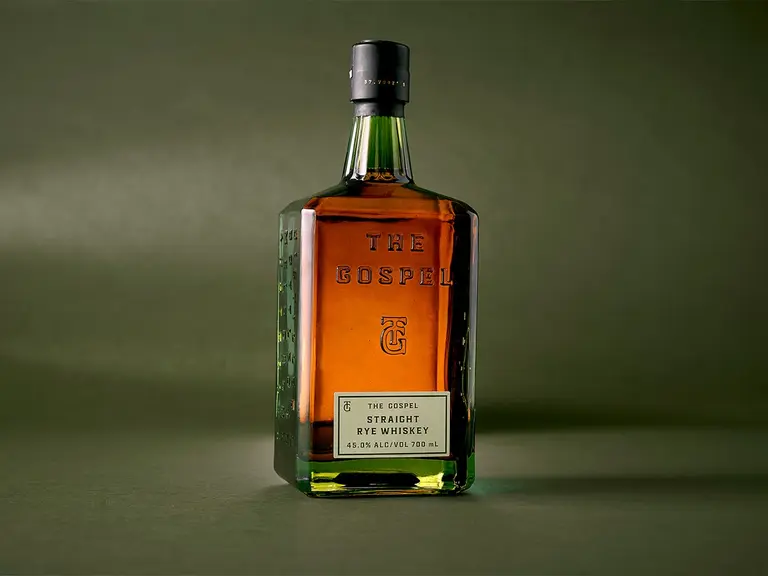




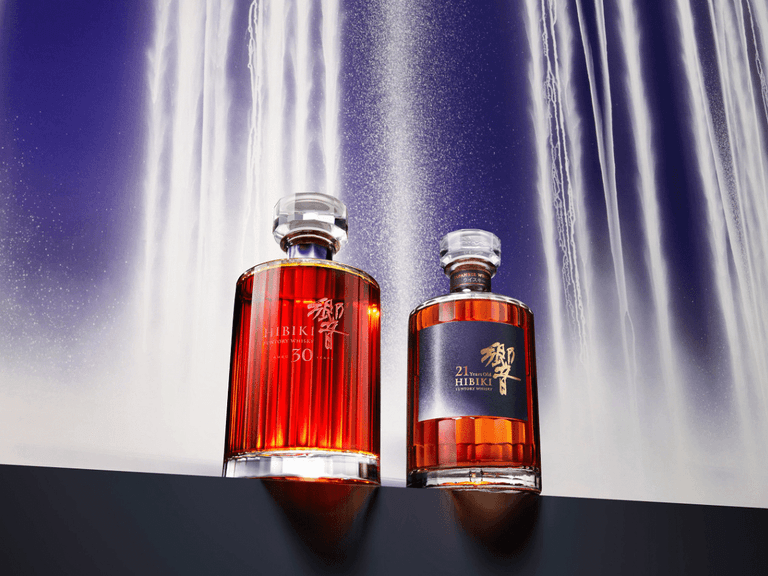


Comments
We love hearing from you. or to leave a comment.